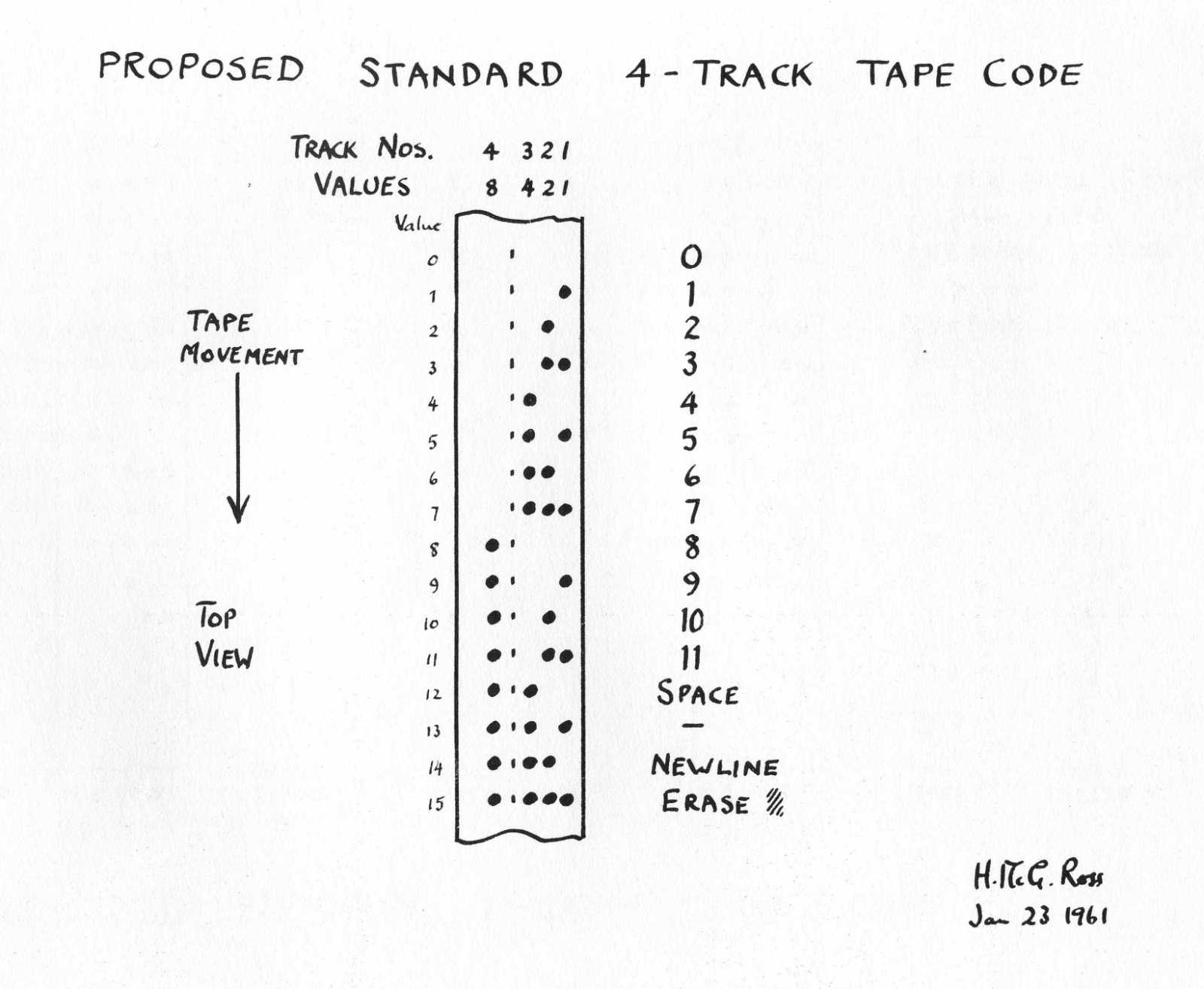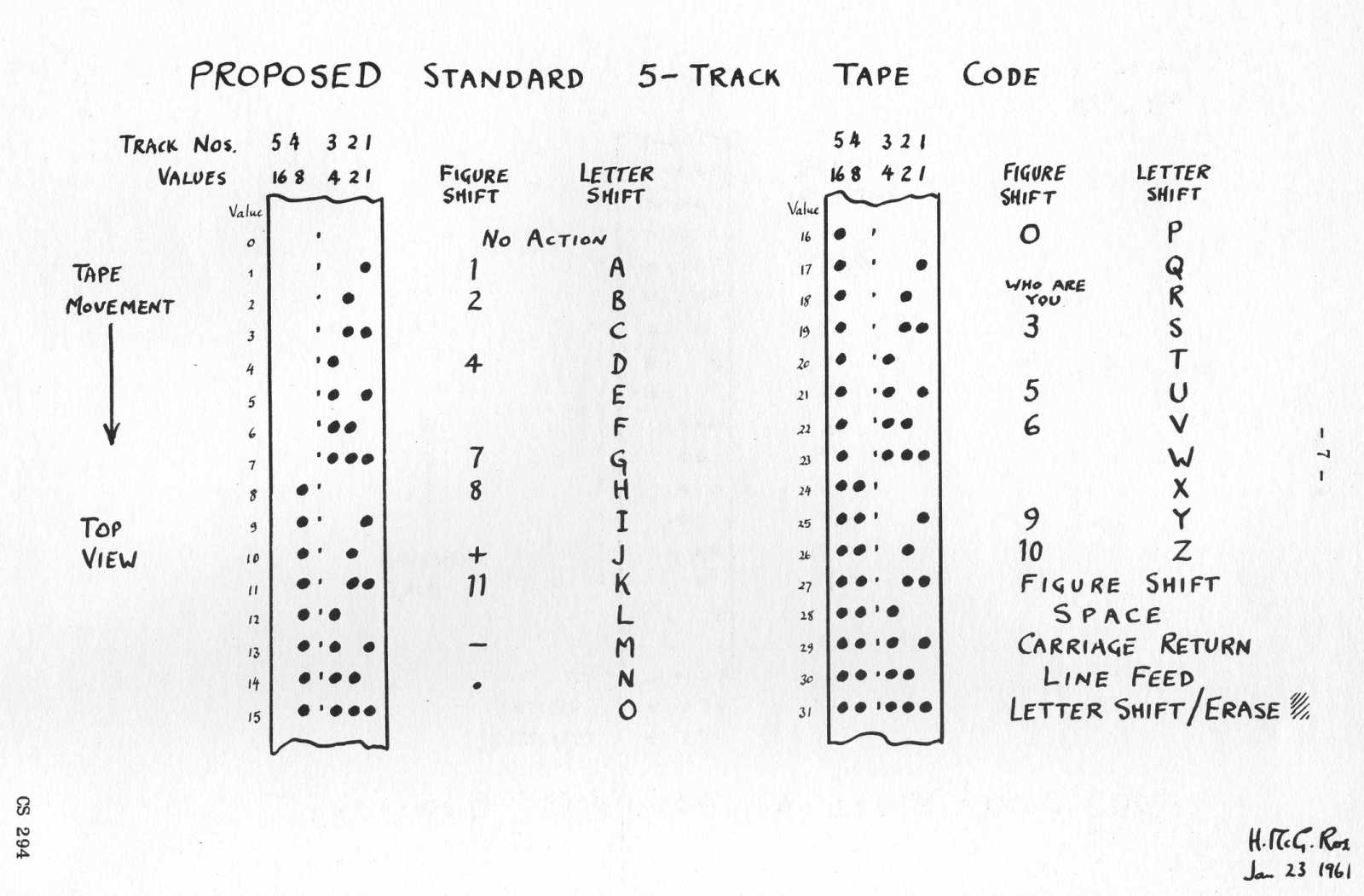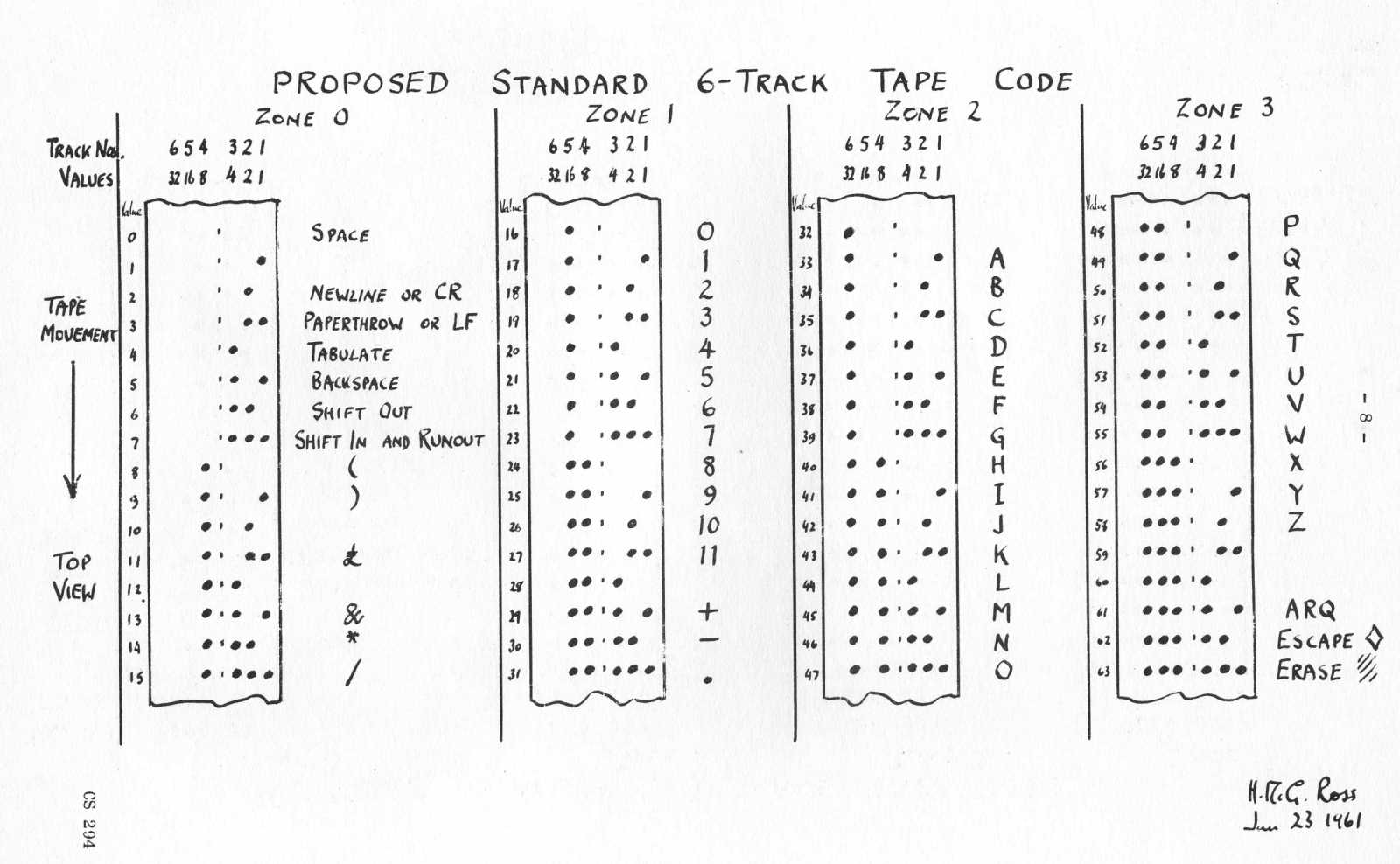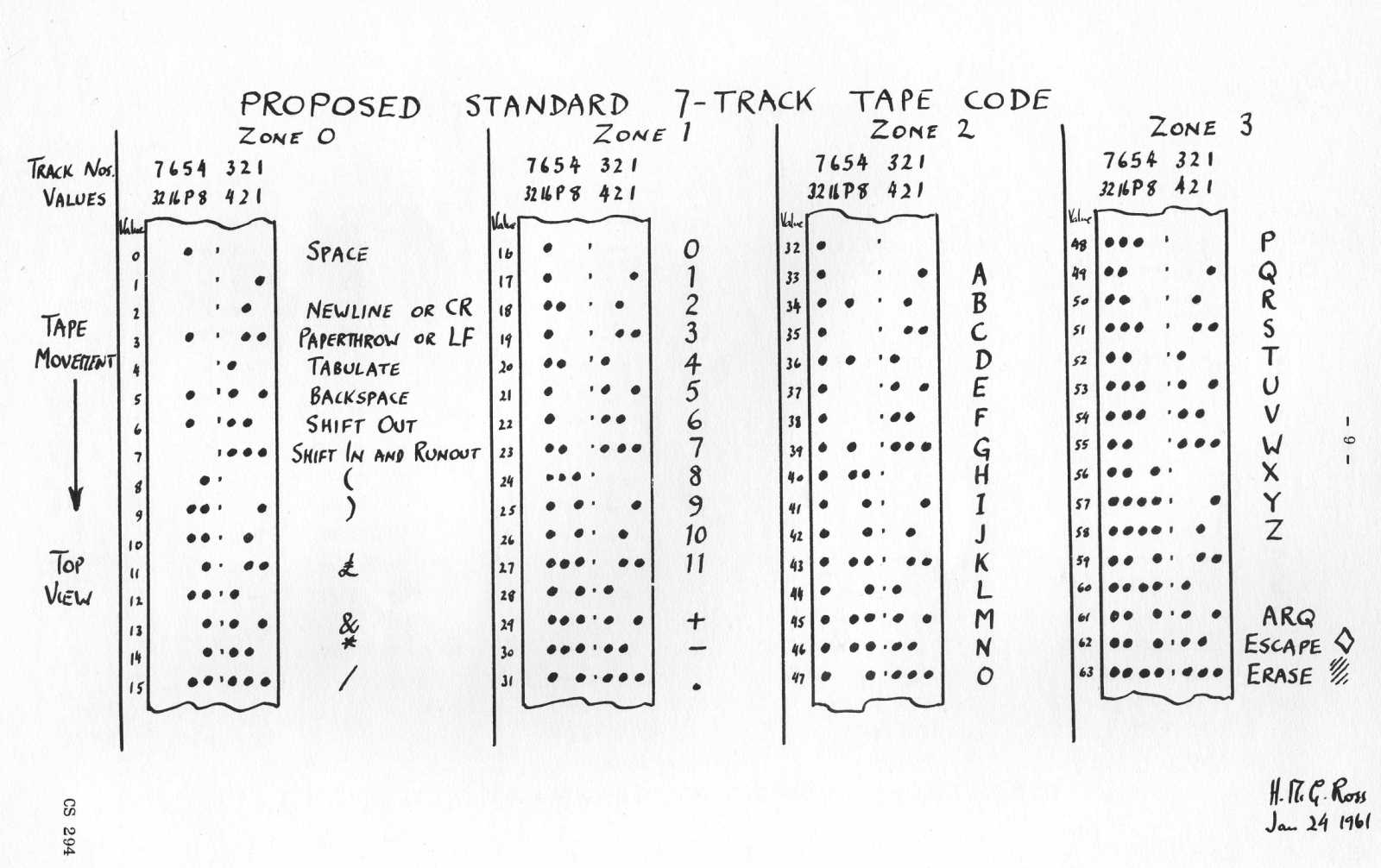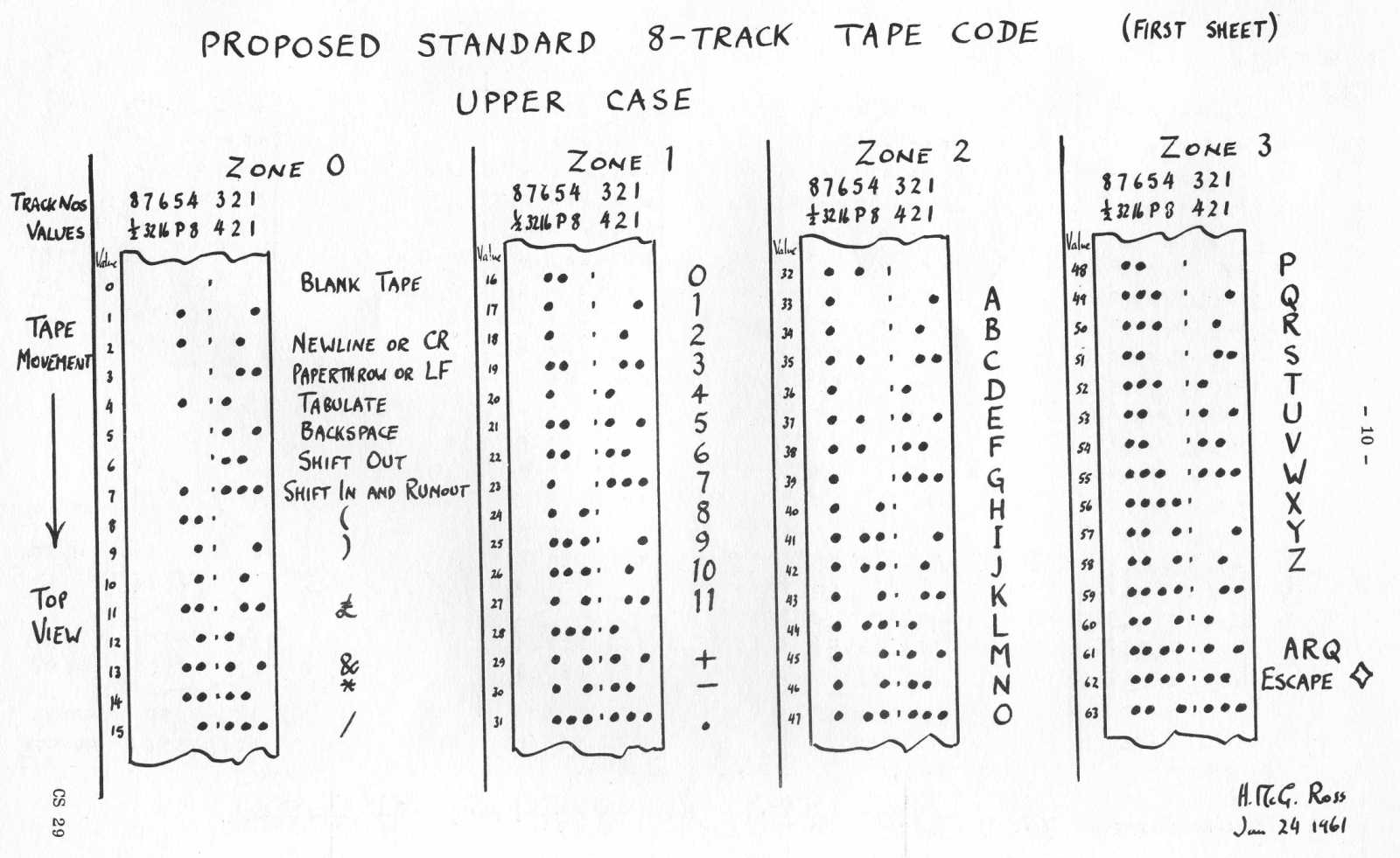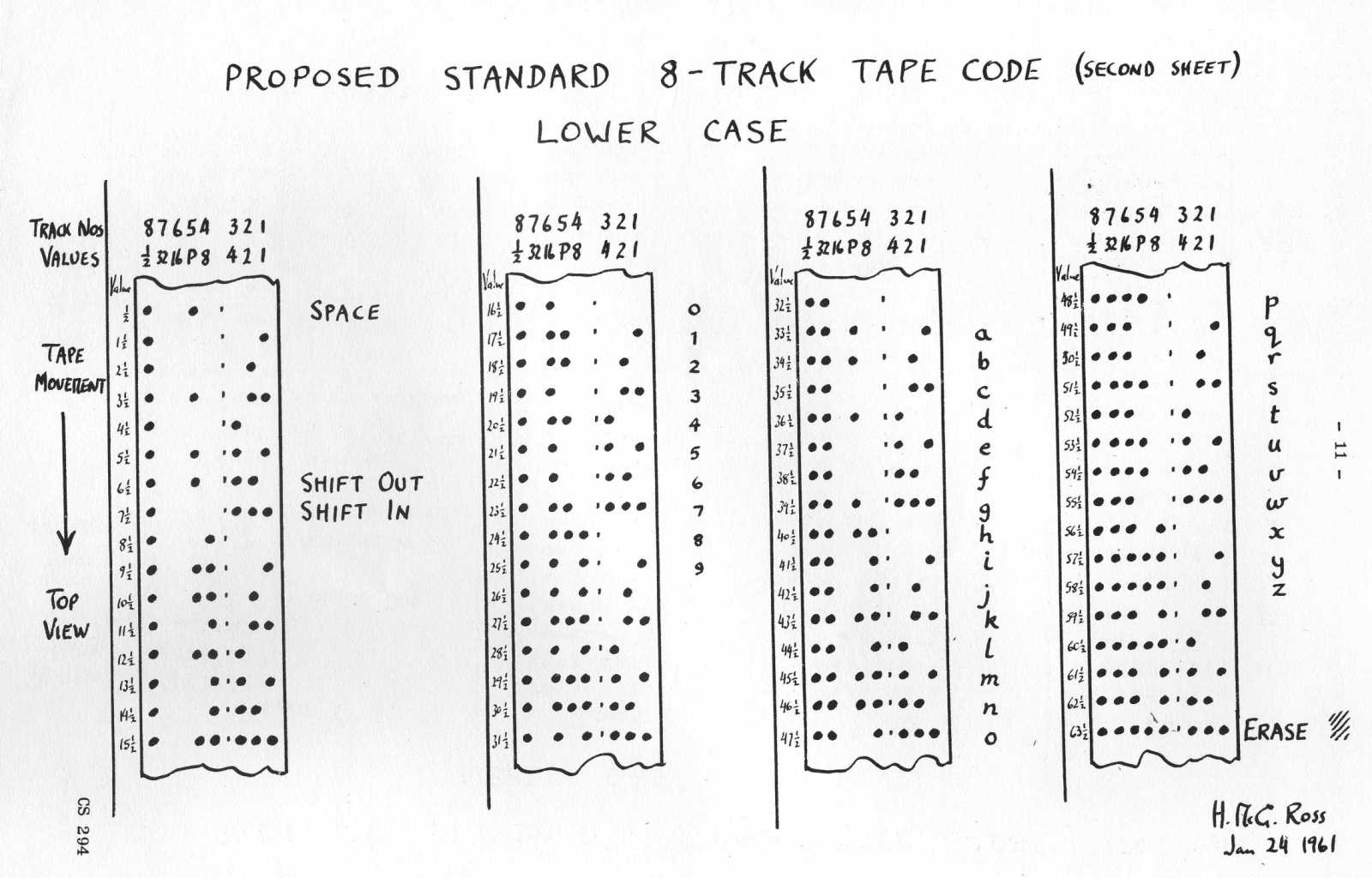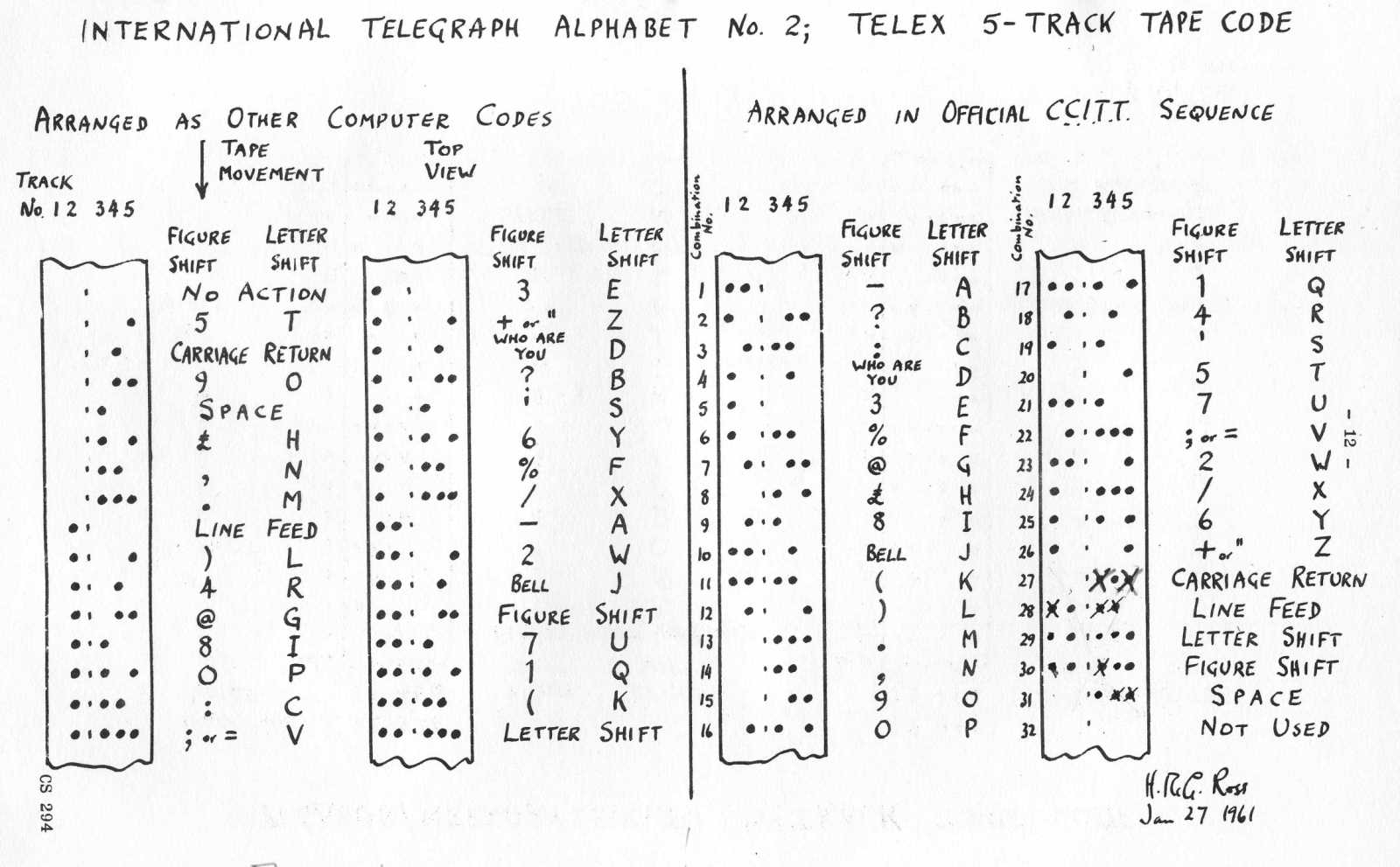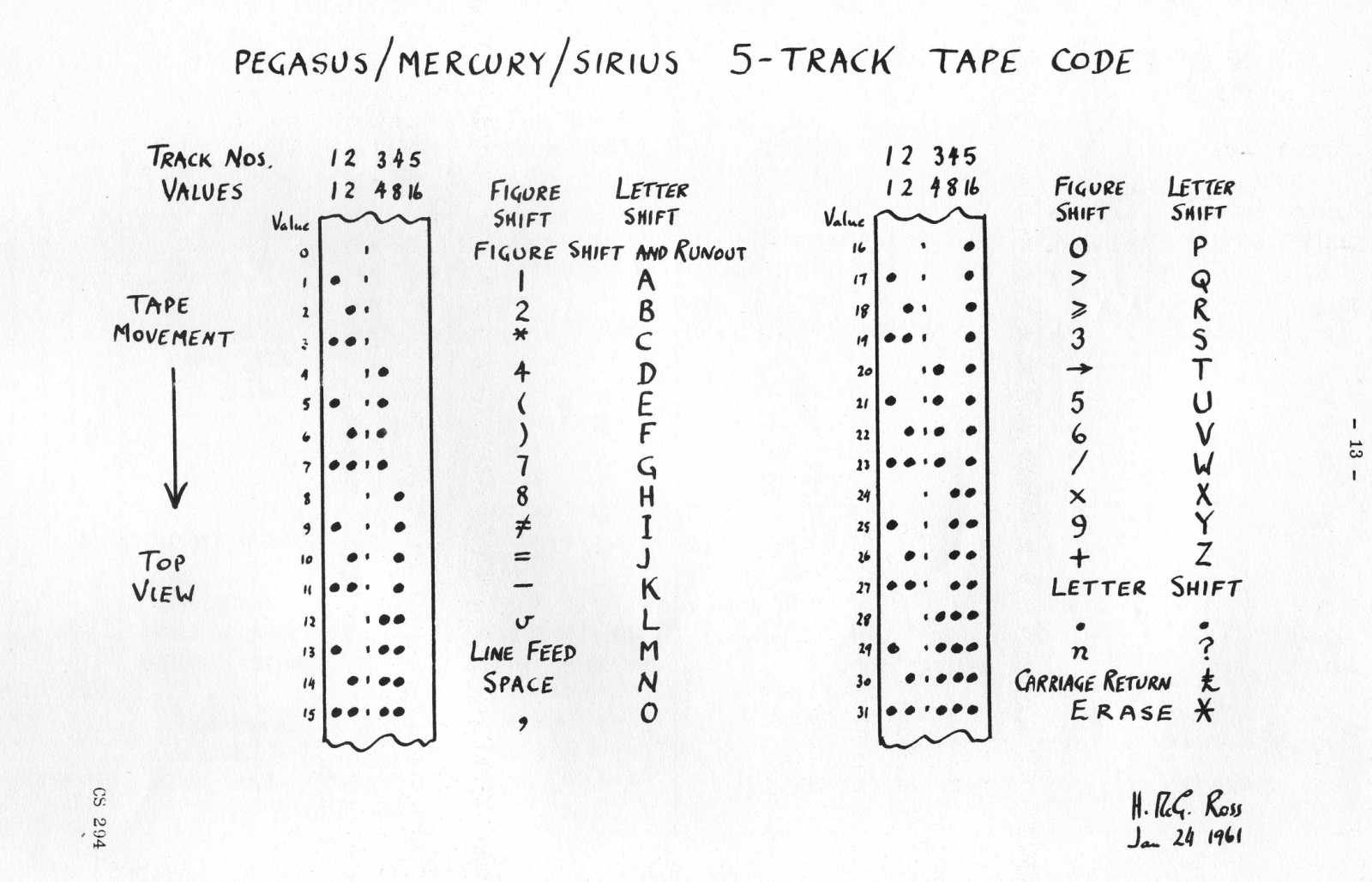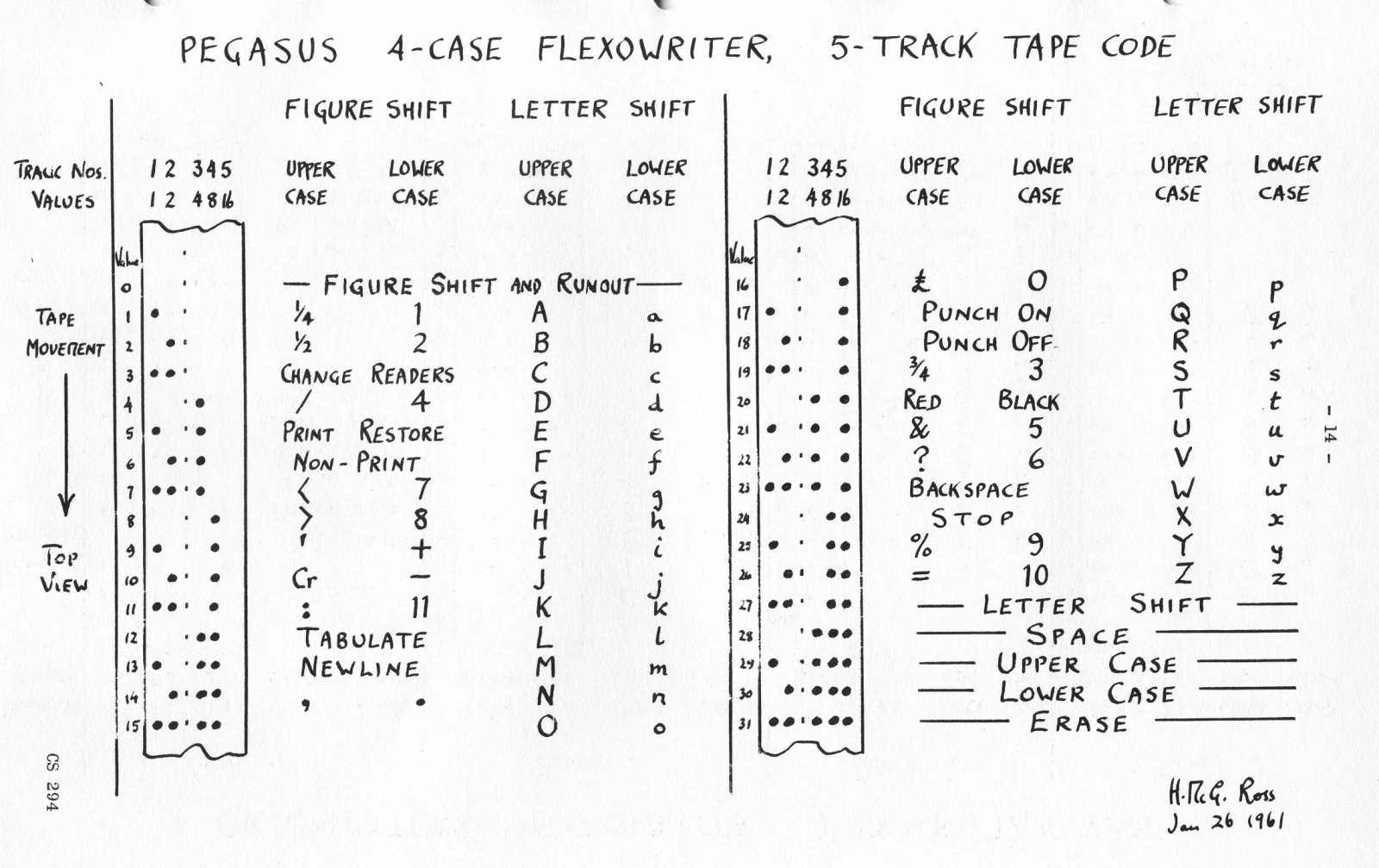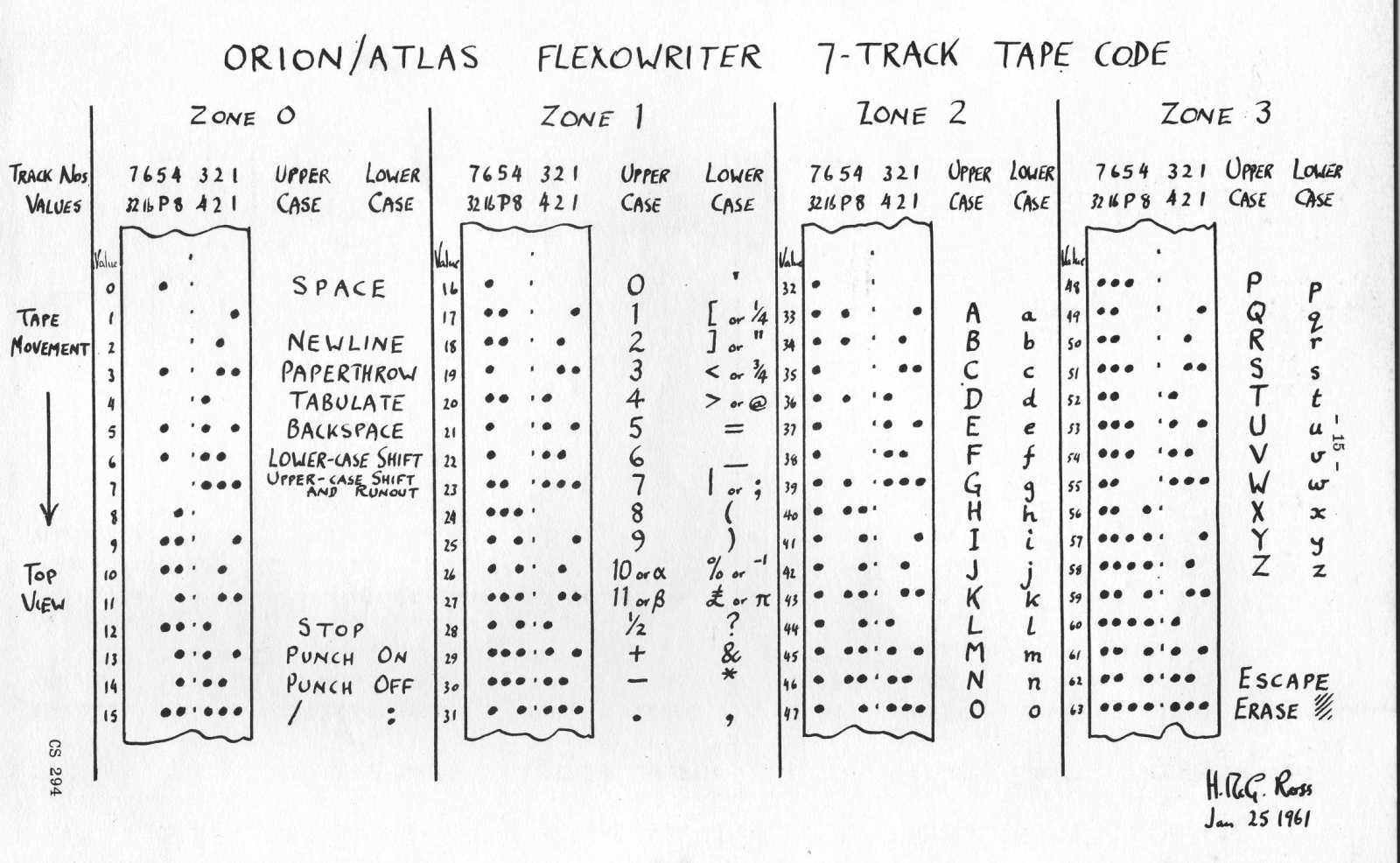

During the last two years users and manufacturers of computers, especially in Britain but also in U.S.A., have been working together to establish codes for punched paper tapes. As an outcome, some standard codes have been proposed for 4, 5, 6, 7 and 8-track tapes.
The primary aim of such work is to facilitate the interchange of tapes between users of different computers; probably this will be of most value for tapes conveying data or intermediate results, but it will also be relevant if common programming languages come into use. Secondly, this work should unify and simplify the development of associated equipment, etc.
In preparing any standard code, it is necessary to seek a proper balance between compatibility between users, and flexibility to accommodate differing requirements. Accordingly, only those characters and functions considered most important are defined, and blank places are left in each code to be used as required.
Attention has been concentrated on choosing symbols for data, rather than for programs; and it has been considered important to provide 10 and 11 as single characters for pence.
The proposed standard codes are shown in the attached tables, and are followed by certain other important tape codes.
In the tables, the tapes are viewed from the top, and are shown moving towards the user. This is the way the more important items of tape editing equipment are arranged, and it corresponds to movement from right to left in an ordinary computer input reader. The codes are arranged so that tapes may be placed in the computer input reader with the 3-track side (with respect to the sprocket holes) nearest the operator, and correspondingly in other machines.
Against each character is shown its value, obtained by regarding each combination of holes and no-holes as a binary number; in general, a hole is treated as a binary 1, and no-hole is a binary 0.
The tables are arranged in zones, each with 16 positions; the 4 less-significant bits of each character determine its position within the zone, and the remaining more-significant bits determine its zone.
There follow some comments on the various codes, drawing attention only to those points which it is thought, may most interest users of Ferranti computers.
This is related to the proposed standard 5-track computer tape code. The tape has the same physical dimensions and layout as 5-track tape, with one track not used. It is primarily intended for lowest-cost equipment, the tape perhaps being punched as a by-product of working an office machine.
This follows the Elliott (405) tape code, when in its form with 10 and 11. While being quite good for computer use, it has the same Figure Shift, Letter Shift, and Who Are You as the Telex code; these may be important for data transmission over normal telegraph circuits.
Numbers and some important symbols and functions have an odd number for holes for checking; then the 5th bit is removed leaving numbers in proper sequence (as in Pegasus/Mercury Code). The code has not, however, the optimum checking characteristics; in particular, five of the numbers can degenerate into No Action by the loss of a single hole.
Making Letter Shift and Erase the same is contrary to Ferranti practice; but it is normal for Telex and for Elliott working, and Elliott's have programming techniques and conventions to deal with it.
5-track tape is 11/l6ths inch wide; somtimes the 5 tracks are punched in 7/8ths inch wide tape, the extra space (on the 2-track side) being used for printing.
It seems unlikely that Ferranti systems will use this tape code much, although it can be accepted on all Ferranti computers (except Sirius), using suitable input/output routines.
The 6 tracks are punched in tape of the same physical dimensions (7/8ths inch wide) as 7-track tape, one track not being used. The code has no inherent checking properties.
Because of these points, it is difficult to visualise this 6-track punched tape being much used in practice. However, the code itself is designed to be particularly suitable for use within computing systems, especially for commercial work. The theory lying behind it is described in Considerations for Choosing a Character Code for Computers and Punched Tapes, Ross, The Computer Journal, Vol.3, No.1, January 1960, p. 202 (reprints available).
This basic 6-bit data code is the basis of the proposed standard 7 and 8-track tape codes, and is used inside Orion and Atlas systems. It has proved suitable for a wide variety of applications, is applicable to many peripheral and associated machines, and is capable of development in many ways including data transmission.
The code has the more important symbols and functions in a single shift. In addition, the Shift Out character permits a shift out of this set of symbols into any other, and Shift In permits a return into this set of symbols. These are locking shifts.
The Escape character, which is of great importance, means that the next single character has a special meaning, i.e. escaped out of the standard code. It is non-locking shift character. One use is that the next character should be treated as a special function, or as a warning character. It may be used for ignoring a block of faulty data, or in connection with data-verification. Another application is that the next character means shift into another case or code and stay in it, i.e. a locking-shift. Thus it may be used to obtain compatibility between many existing and future codes, and it permits virtually unlimited extension of a standard code.
ARQ means request for re-transmission, used in certain systems of data transmission, in the event of an error.
This is the basic 6-bit code laid out on 7-track tape with the addition of an odd-parity bit in track 5.
7-track tape is 7/8ths inch wide.
Probably the dominant justification for using 7-track tape at present is that some Creed tape editing equipment can be obtained, representing very good value for money. Such equipment - keyboard punches, verifiers, and tape copiers - would be suitable for routine punching of data in quantity; but such tape editing equipment, for use with Ferranti computers, does not at present incorporate a teleprinter (c.f. the Orion/Atlas Flexowriter 7-track tape code, below).
This is the basic 6-bit code laid out on 8-track tape (1 inch wide) with the addition of an even-parity bit in track 5 and a hole in track 8 to mean lower case.
In a computer with 6-bit characters, the upper and lower cases would probably be dealt with by introducing case-shift characters, the necessary conversion from the 8th track being done by input/output routines. However, in a computer with 8-bit characters, the characters from tape can be accepted directly; the purpose of making the lower-case hole contribute value ½ inside the computer is to interleave upper and lower case letters properly for sorting, and to permit lower case to degenerate into upper case, giving the basic 6-bit code, if the least-significant bit is ignored.
It is probable that many users will wish to replace the suffix numbers in zone 1, lower case, by other symbols, e.g. programming or commercial signs; these would be too varied to warrant standardisation.
A tape editing set (BIMA) based on an IBM typewriter, and a keyboard perforator and verifier (Creed), using this 8-track tape code, are likely to become available during 1961. There is little doubt that this code will be widely exploited in the next few years.
This has been arranged in the table in two forms; first, arranged with the characters on tape in the same sequence as the other codes; secondly, arranged in the standard CCITT sequence.
This code does not use the concept of a value being associated with each track and, therefore, no value can be given to each character (considered as a binary number).
However, each combination of holes in tape is given an identification number, as shown in the second form of the table.
In telegraphy, each character is serialised, track 1 being transmitted first and track 3 last.
Because so much tape editing and printing equipment with this code is in use, arrangements have been made for it to be read into Orion and Atlas. A table lookup procedure will be used to convert to the basic 6-bit code inside the computer.
Note that the significance of the tracks in this code are reversed from all other codes - it is unique in this respect; this was one of the first codes to be designed for computers, and it followed the track-numbering of the CCITT code.
A variant of the Pegasus 5-track code which permits the full exploitation of the facilities of a Flexowriter. Intended primarily for high-quality printing of commercial results, with upper and lower-case letters, red and black, wide documents, etc.
This is the primary tape used for input and output for Orion and Atlas, both for program and for data.
The code is a minor variant of the standard 7-track tape code, with upper and lower-case working, the main difference affecting the symbols ( ) % £ ? & * which have been placed in the lower-case of zone 1. On input to the computer, these symbols are transferred to zone 0, by dropping the 5th bit from track 6. And conversely on output. This arrangement overcomes the restriction of the limited number of printing keys (44) on the keyboard of Flexowriters or other typewriters.
The table shows alternative symbols for certain tape-characters. Those for preparing Orion programs are shown first in each pair; the alternates are for Atlas programs, or for a typical machine for preparing commercial data. For the latter applications some users may require special symbols, and these should preferably be allocated in conformity with the following rules:
Further, some special machines have already been designed using the following code-values:- 59, 60, 61 for Swedish letters Å, Ä , Ö , or for ¼, @, ¾ respectively; and for Flexowriter functions, 8 = change readers, 9 = change colours, 10 = non-print, 11 = print-restore.
The Creed equipment used for 7-track tapes with Orion and Atlas is arranged to punch in this code, rather than the standard 7-track tape code, so that tapes will be compatible with Flexowriter tapes.
